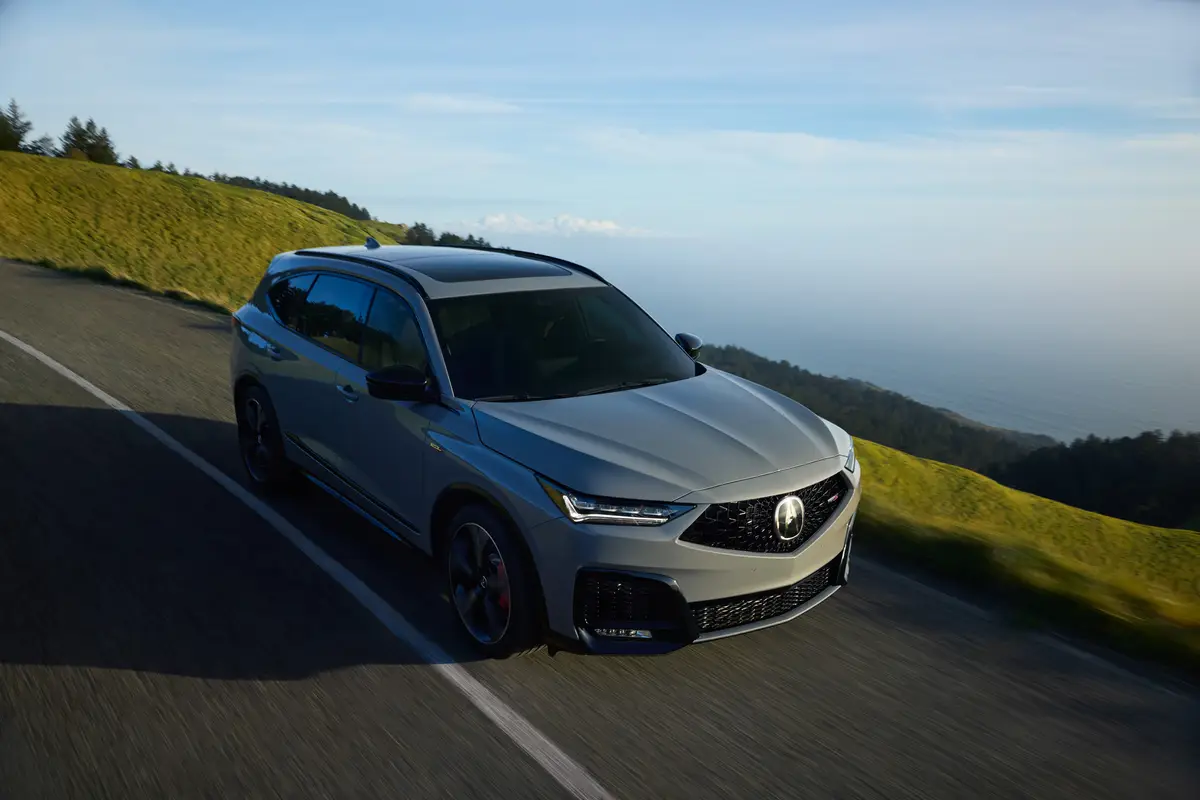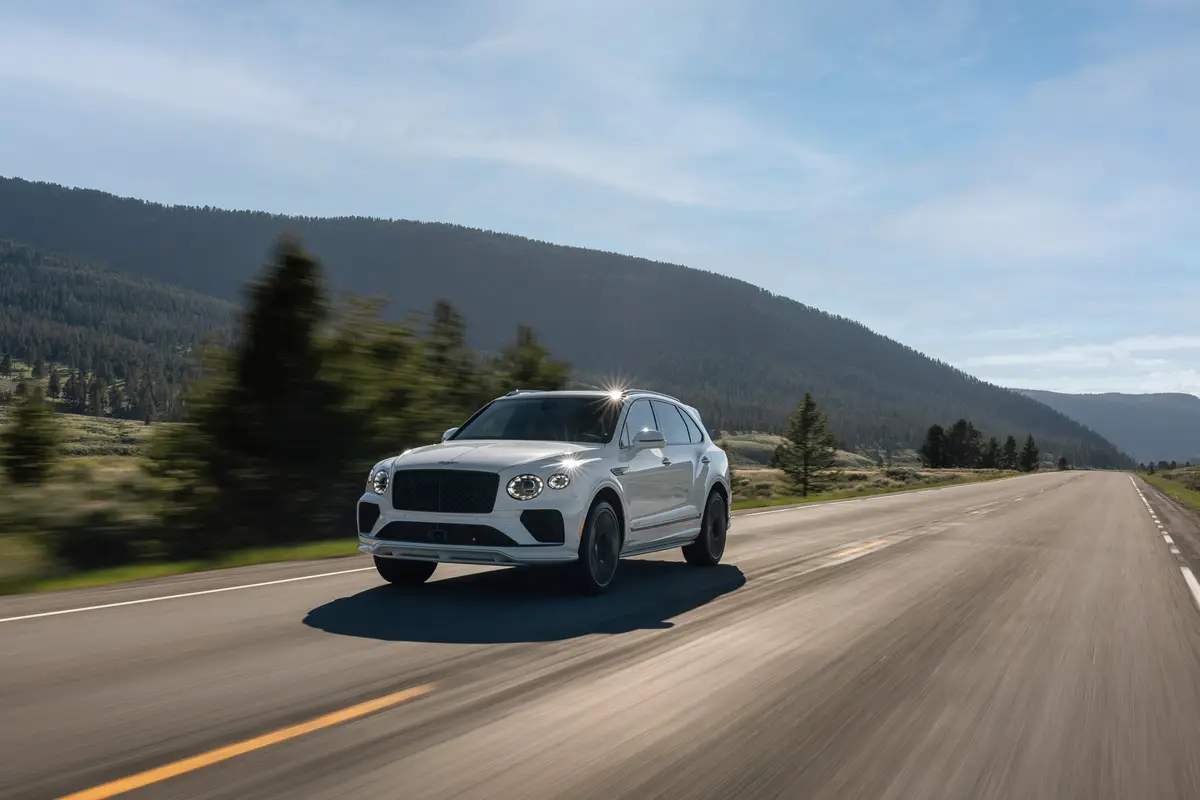washingtonpost.com's view
The baggy pants boys arrived first. Some wore jackets. Others wore caps, and some had long, narrow chains hanging from rear pockets.
When they talked, they moved, like: “Yo, man,” knee dip, hip sway. “That’s the bomb!,” downward swimming motion with one hand, while the other hand scratched the unprintable.
“The bomb,” in baggy pants lingo, translates to “that’s really nice,” or what we baby boomers used to call “hip,” or “cool,” or “groovy.”
The object of approbation was the 1998 Dodge Durango, Chrysler Corp.’s new sport-utility vehicle, which was parked on an Upper West Side street.
The tested Durango had a black body with a blacked-out grille and a dark gray, leather-covered interior. It was a muscular work, with fender bulges front and rear, all of which sat atop highly polished, chrome-plated wheels.
The baggy pants crew loitered near the Durango for a while, occasionally asking questions, such as: “What’s it got?” One in the group inquired about the Durango’s price. I told him, which provoked a spate of spirited expletives from him and his fellows.
The group moved on. But before departing, one of its members declared his desire to own a Durango and asked, in what I assumed to be jest, if he could “do some miles” in the one in my possession.
I declined and, moments later, put the Durango in a high-security garage.
Background: Chrysler isn’t pursuing the baggy pants crowd with its New Durango. Instead, it’s looking for buyers aged 30 to 48 years old, with annual household incomes ranging from $50,000 to $75,000. About 75 percent of those prospective buyers are men, mostly married with children.
Chrysler’s marketers believe those buyers want a sport-utility vehicle that is big enough to carry as many as eight people, strong enough to tow up to 7,000 pounds, nimble enough to move through an urban environment, and rugged enough — should its owners desire to do so — to traverse a variety of unpaved roads.
The Durango, thus, is offered as “an aggressive and exceptionally versatile compact sport-utility vehicle” that also is “a more convenient, practical and fun-to-drive alternative to full-size SUVs,” Chrysler’s marketers say.
It isn’t clear if that means Chrysler expects the Durango to cannibalize some sales of its Jeep Cherokee and Grand Cherokee models, which are also fun and, depending on one’s definition of utility, quite practical in handling a number of chores. What is clear is that Chrysler has a heck of an attention-getter in the Durango.
Durango buyers will have a choice of three engines, including the tested5.9-liter Magnum V-8, which is rated 250 horsepower at 4,400 rpm, with torque rated 345 pound-feet at 3,200 rpm. That’s a great engine for folks who plan to pull travel trailers. But it makes little real-world sense for people who plan to pull little or nothing at all, or who have no desire to traverse the Rockies without the benefit of interstate highways.
A more sensible engine w ould be the175-horsepower, 3.9-liter Magnum V-6, or the 230-horsepower, 5.2-liter Magnum V-8. An electronically controlled, four-speed automatic transmission is standard with all engine choices. Standard brakes include power front discs/rear drums with antilock backup.
A note here: Chrysler’s new generation of antilock brakes exhibit little of the pedal shudder evident during the application of antilocks in older Chrysler cars and trucks. The company’s engineers hope that the smoother antilocks will prevent people from erroneously pumping the brakes during panic stops. Proper braking of antilocks requires maintaining steady pressure on the brake pedal until the vehicle stops, or the crash hazard is avoided.
1998 Dodge Durango
Complaints: The Durango’s humongous side-view mirrors are great for rear vision, but they get in the way of forward vision on the left and right sides of the vehicle.
Praise: Overall engineering, construction and styling. Kudos to whoev r suggested scalloping the ceiling over the center and rear seats. Those ceiling indentations provide lots of welcome headroom.
Head-turning quotient: Major neck-snapper. But some folks said that the exterior styling was overly aggressive — “too macho,” as one woman put it.
Ride, acceleration and handling: Triple aces. Not much trucky feel, even on some of New York’s pockmarked streets. Boffo acceleration. The thing roars out of stops. Braking was excellent. All driving in the test model was on-road.
Mileage: Awful with the tested 5.9-liter V-8. On a round trip from New York to Northern Virginia, an estimated 500 miles, it averaged 13 miles per gallon at a cost of $57 for regular unleaded.
Price: Base price on the 5.9-liter Durango is $28,945. Estimated dealer invoice price on the base model is $25,500. Price as tested is $33,800, including $4,325 in options and a $530 destination charge.
Purse-strings note: Compare with Jeep Grand Cherokee, Chevrolet Blazer/GMC Jimmy, Ford Explorer/Mercury Mountaineer, Mitsubishi Montero Sport, Isuzu Rodeo/Honda Passport, Toyota 4Runner, Mercedes-Benz ML320.
Latest news



